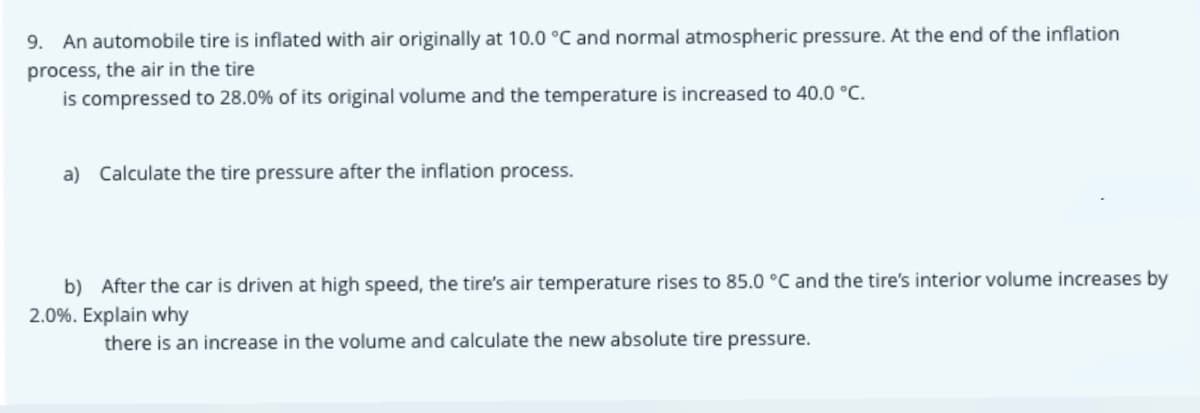9. An automobile tire is inflated with air originally at 10.0 °C and normal atmospheric pressure. At the end of the inflation process, the air in the tire is compressed to 28.0% of its original volume and the temperature is increased to 40.0 °C. a) Calculate the tire pressure after the inflation process. b) After the car is driven at high speed, the tire's air temperature rises to 85.0 °C and the tire's interior volume increases by 2.0%. Explain why there is an increase in the volume and calculate the new absolute tire pressure.
Energy transfer
The flow of energy from one region to another region is referred to as energy transfer. Since energy is quantitative; it must be transferred to a body or a material to work or to heat the system.
Molar Specific Heat
Heat capacity is the amount of heat energy absorbed or released by a chemical substance per the change in temperature of that substance. The change in heat is also called enthalpy. The SI unit of heat capacity is Joules per Kelvin, which is (J K-1)
Thermal Properties of Matter
Thermal energy is described as one of the form of heat energy which flows from one body of higher temperature to the other with the lower temperature when these two bodies are placed in contact to each other. Heat is described as the form of energy which is transferred between the two systems or in between the systems and their surrounding by the virtue of difference in temperature. Calorimetry is that branch of science which helps in measuring the changes which are taking place in the heat energy of a given body.

Trending now
This is a popular solution!
Step by step
Solved in 2 steps with 2 images









